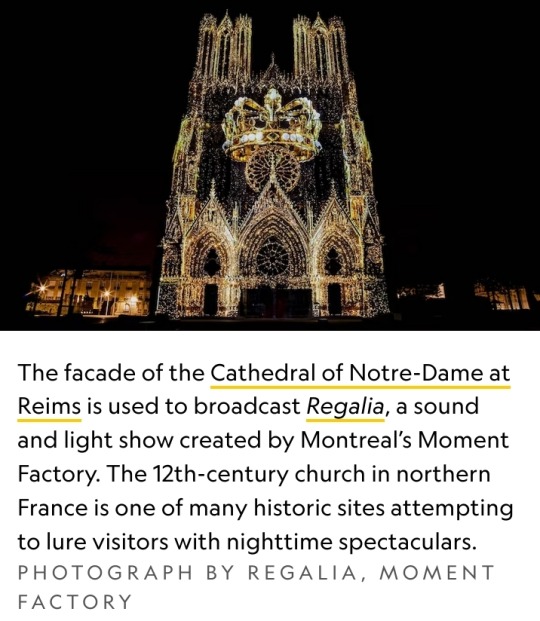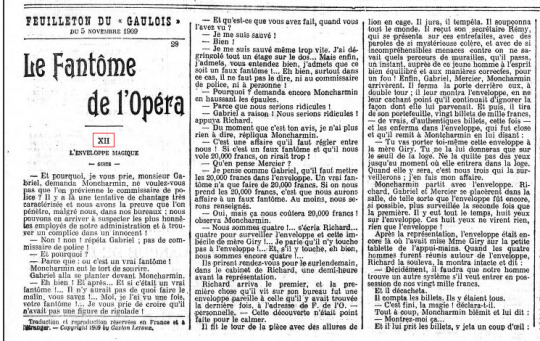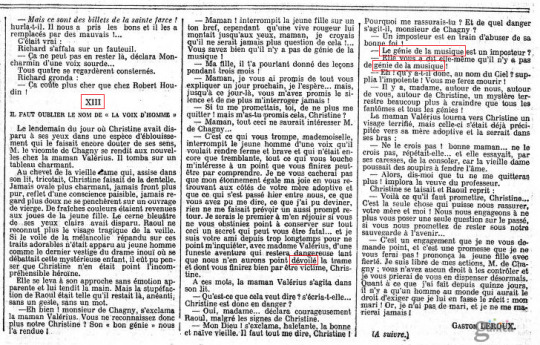#houdin
Explore tagged Tumblr posts
Text

Always keep a gargoyle (gecko) to guard your books 📚
#godzilla reads#my pets#Houdin#gargoyle gecko#books and pets#books and lizards#bookshelf#books and beasts#book blog#booklover#shelfie#bookworm#bookish pets
40 notes
·
View notes
Text

Eminems Time Portal (2024)
49 notes
·
View notes
Text
Orange League, Episode 28 - Tag Battle! The Final Gym!
Liucheng/Kumquat Island, home to the final Gym. It's time for Ash to face the North Star of the Southern Cross! I mean, first there's a giant Rocket mech to deal with.
Where are they getting the money for these mechs? It was an explicit plot point in the early season that the Rockets are having to operate low-budget because they're on thin ice with Giovanni. That's why they downgraded their Gyarados sub to a Magikarp sub. That they're penniless has been alluded to multiple times since.
But ever since Lugia, suddenly they can build mechs again. Did they ransack Dipshit's sky fortress after it crashed?
Whatever the case, Ash and North Star Ruriko/Luana put Team Rocket away in short order and officially begin Ash's Gym Challenge.
Luana's a bit ahead of her time. She introduces Ash to Tag Battle, a prototype for the Double Battles that will be introduced way off in Gen 3. The rules are the same as a Double Battle, except you lose as soon as either of your Pokemon gets KO'd.
Ash intends to lead with Pikachu and predicts Luana will use the Alakazam she demonstrated in the Rocket battle. He needs to come up with a counterpick.
Personally, I recommend Snorlax. Alakazam's a monster; Extremely fast and with intense Special. But they have to sacrifice physical stats and HP for that, and that's a vulnerability that can be easily exploited. Even Reflect only brings Alakazam's resistance to physical attacks up to decent.
Alakazam lacks access to Hypnosis and Thunder Wave means fuck-all to Snorlax. The reality is that Alakazam simply can't hang in the ring with Snorlax's brutal STAB Normal smashes, up to and including the Hyper Beam that they demonstrated last episode.
Ash goes with....
Tag Battle: Pikachu and Charizard vs. Alakazam and Marowak
Not a bad choice. Charizard's got some strong Normal attacks to exploit Alakazam's vulnerability, and their Flying subtype grants immunity to Marowak's STAB moves. Offensively, however, they're going to want to stick to those Normal attacks and ignore their own STAB moves; Marowak resists and Alakazam's Special, as previously mentioned, is through the roof - 135 to Charizard's 85 before EVs.
This isn't Ash's best option, but it's far from his worst (Bulbasaur). For Ash's first ever experience with Doubles-adjacent battling, this works.
Pikachu honestly seems like the weak link, especially since this format ends at the first KO. Luana could easily score a one-turn win by focus-firing Psychic and Bonemerang on Pikachu.
In any case, this definitely goes down as one of Ash's outside-the-box victories. He baits Marowak into throwing Bonemerang, then distracts them with a Thunderbolt that they resist entirely, but that pulls their attention away. This allows Charizard to lead Bonemerang into Alakazam, who is in the middle of prepping a Hyper Beam. The Bonemerang knocks out Alakazam, whose Hyper Beam misfires and takes out Marowak.
There is absolutely no mechanism for anything that just happened. But it was pretty cool.
Ash Wins!
One last destination remains before wrapping up Ash's journey in the Filler Archipelago. Onward to Kankitsu/Pummelo Island!
1 note
·
View note
Photo

Georges Méliès in The Living Play Cards.
8 notes
·
View notes
Text



Sabine Houdon
Marble
Jean-Antoine Houdin (1741-1828)
French (Paris), 1788
First two photos from Met Museum's website plus my own photo. Subject is the artist's daughter, she's 10 months old here.
"The artist lovingly rounded her pudgy cheeks, softened the tucks of baby flesh by her breast, and suggested the wisps of hair straggling over her forehead". (Met Museum Collection)
4 notes
·
View notes
Text
Casual reminder that every reference to Harry Houdini in any work of fiction indirectly implies the existence of Jean-Eugène Robert-Houdin (from whom Houdini got his stage name) and also the existence of Blois in this universe, in any fashion.
#france#french#jean-eugène robert-houdin#harry houdini#blois#yeah#looking at you “harry hoofdini”#mlp#my little pony#trixie you're the proof of the existence of blois in the mlp universe
10 notes
·
View notes
Text
When you eat some day-old clams from a questionable food truck

#pokemon#pkmn#alakazam#pokemon tcg#pokemon cards#outdesign posts things#just to clarify foodin is alakazam's japanese name and sounds similar to houdin(i)#'evil' is probably a more accurate translation than just 'bad' but I digress
53 notes
·
View notes
Text


Oh God, I'm gonna have to watch an episode of the Good Doctor.
6 notes
·
View notes
Text


More than two miles long and 1,142 feet tall, Uluru, the red sandstone rock formation in Australia’s Northern Territory, wows travelers during the day.
But now, a new night spectacle Wintjiri Wiru illuminates the darkness adjacent to the monolith in a way that reveals Indigenous culture while dazzling with high-tech sound and lights.
“Humans are drawn to light—just think of how compelling sunsets are,” says Melbourne light artist Bruce Ramus, who designed the work in collaboration with the local Anangu people and Voyages Indigenous Tourism.
Wintjiri Wiru is just the latest offering—and newest technology — in the tradition of son et lumière (sound and light) shows, grand public spectacles projected on to (or close to) historic buildings and natural wonders.
These mash-ups of pageantry, culture, and art are experiencing a boom fueled by digital advances and tourist sites looking to attract visitors after dark.
Here’s where to see the latest shows, plus why visitors love these “virtual campfires.”


How did sound and light shows start?
Paul Robert-Houdin created the first sound and light show in 1952 at France’s Château de Chambord.
Music and narration played while slide projectors splashed colored lights on the 16th-century palace.
“We had the feeling that a new way of discovering and understanding monumental heritage was perhaps being born,” one observer wrote in Le Figaro newspaper.
The concept was a hit.
“Standing in the dark and being immersed in sounds and images creates a sense of enchantment,” says Jane Lovell, a professor of tourism at Canterbury Christ Church University in England.
In the following decades, other storied sites harnessed that magic, such as the Red Fort in Delhi, India, and Independence Hall in Philadelphia.
“There were captive audiences for these attractions, so the efforts were minimal—just light up these beautiful things that already existed,” says California light show producer Ryan Miziker.
Early technology was expensive and bulky: sofa-sized slide carousels, finicky stereo speakers that malfunctioned in bad weather.
The storytelling, if mostly historically accurate, could be clunky and lecturing.
At Egypt’s Pyramids at Giza, the still-running circa-1961 show features the Sphinx “narrating” a lofty spiel about ancient life as murky colored lights wash over the monuments.
youtube
https://youtu.be/anLYLqMyK1I

How tech took over light shows
“Son et lumieres started out as pretty rudimentary things—a castle would be lit up and a soundtrack would say, ‘this tower was built in 1592,’” says Ross Ashton of London’s Projection Studio, which designs extravaganzas for attractions from Welsh castles to Indian fortresses.
But by the 1990s, innovations in video, lasers, and audio meant creators could screen riveting, mind-bending shows.
“Digital video changed everything,” says Miziker.
“We had software to do 3-D mapping, which takes a round object like a globe and flattens it, or wraps any structure in overlapping, blending geometry.”
Sound evolved, too.
“Bells, spoken voices from different directions, or a fireball rolling, you can layer sound up, so it feels like a tapestry,” says Projection Studio’s sound artist Karen Monid.
Today’s sound and light shows are like mini action movies screened on historic buildings or natural wonders.
San Antonio’s The Saga wraps the 18th-century San Fernando Cathedral in sound effects (mariachi ballads, cannon blasts) and painterly images (folk dancers, renderings of the Alamo) to tell the story of the Texas city.
In Jerusalem, Israel, the ancient Tower of David has two night shows, one on city history and the other about the biblical shepherd-turned-ruler that gave the site its name.
Wintjiri Wiru harnesses LED lights, lasers, sound, and 1,100 drones to recount a legend from the Anangu, who consider Uluru sacred.
The show depicts mala (wallaby-rabbit) beings battling a gigantic devil dog spirit.
“Combine light with sound—in this case Anangu songs and other effects—and it’s like the desert is speaking,” says Ramus.
Other projects are more abstract, such as the new Aura Invalides show at Les Invalides in Paris, which fills the grand interiors of the historic military monument with surreal rays of colored light and outlines architectural elements in laser graffiti.
“People move around within the building, making it more like a 360-degree immersion than something didactical,” says Manon McHugh, a spokesperson for Moment Factory, the studio that created the show.

Why travelers love spectacles
Experts think people are drawn to these shows for their sense of wonder and spectacle.
“Sound and light shows are like fireworks—it’s impossible to look away,” says Miziker.
"Since audiences are sitting in the dark, there’s cognitive dissonance, with the atmosphere almost becoming its own entity,” says Lovell.
youtube

https://youtu.be/FV3XdOda3zM
Plus, in this age of Instagram, sound and light spectacles make ideal selfie backdrops or video ops.
“When Moment Factory started doing shows, we didn’t want people to have their phones out,” says McHugh.
Now, other digital production studios build in elements like photo booths to encourage participants to share their experiences.

How sound and light shows help tourist sites
Sound and light shows can be expensive and time-consuming to design.
(Wintjiri Wiru was developed over several years and cost $10 million.)
But many tourist attractions and cities are willing to shell out.
“They produce new income streams,” says Ashton. “People normally go home at night, but if you sell them a ticket to an illumination, they’ll come back.”
Many sound and light experiences in public, urban spaces — outside cathedrals, on city halls, across skyscrapers — are free, but paid for by cities to give visitors an excuse to stay an extra night.
“We used to think of tourism as a daytime activity, but there has been this tourist-ification of the night,” says Andrew Smith, a professor of urban experiences at England’s University of Westminster.
“Now cities want to attract people and keep them in town. It’s a commodification of the night, a way to extend economic and cultural activity.”
Studies indicate that these shows might even make city downtowns feel safer. “It starts to dematerialize the buildings,” says Ramus.
“You just see the lights, and our cities become transparent. They feel gentler.”

#Youtube#Wintjiri Wiru#son et lumière#sound and light shows#Paul Robert-Houdin#Château de Chambord#France#Pyramids at Giza#Cathedral of Notre-Dame#Regalia#Moment Factory#Uluru#Anangu people#Voyages Indigenous Tourism#The Night Spectacular#King David#Jerusalem#Projection Studio#San Fernando Cathedral#Tower of David#LED lights#drones#sound#lasers#Aura Invalides#National Geographic#Nat Geo#The Saga
4 notes
·
View notes
Text
His name was also inspired by the Father of prestidigitation, Jean-Eugène Robert-Houdin, born in my humble town of Blois. This is even less relevant and maybe a little chauvinistic, but it's a reminder of the fact that if you make a Houdini parody in your work of fiction, you imply the existence of Robert-Houdin and thus the existence of Blois in the world you have created. This is a threat.
young harry houdini was hot. ppl didn’t go to those shows to watch the illusions they went to watch a half naked guy chain himself up
81K notes
·
View notes
Text

Not the whole roster but I filled it out
Template here Picrew (with slight edits)
#oc meme#character meme#vampire the masquerade#VtM#Lukas Love#Valter Locke#Rafael Reis#Seraphin Sable#Jesse Steele#Art Houdin#Aidan Evans#writing Aidan is so fun bc of how much I cringe
0 notes
Text

Here’s my lizard
17 notes
·
View notes
Text



Welcome to the 29th installment of 15 Weeks of Phantom, where I post all 68 sections of Le Fantôme de l’Opéra, as they were first printed in Le Gaulois newspaper 115 yeas ago.
In today’s installment, we have Part III of Chapter 11, “L’enveloppe magique” (“The Magic Envelope”), and Part I of Chapter 12, “Il faut oublier le nom de « la voix d'homme »” (“You Must Forget the Name of ‘the Man’s Voice’”).
This section was first printed on Friday, 5 November, 1909.
Gaston Leroux cut “The Magic Envelope” from his novel when he prepared the First Edition for publication.
In January of 2014, I published my translation of this chapter. Mine was the first English translation of this chapter to be published.
You can read my translation of “The Magic Envelope” on my blog here.
The text of “The Magic Envelope” starts at “'And why, if you please, Monsieur Gabriel,' asked Moncharmin, 'do you not want us to inform the Commissary of Police?',” and goes to the end of the chapter, “'This cost us more than if Robert-Houdin himself had done the trick!'.”
TRANSLATION:
“And why, if you please, Monsieur Gabriel,” asked Moncharmin, “do you not want us to inform the Commissary of Police? This is a very blatant attempt at extortion, and in spite of ourselves, we now have visible proof here in our office; we might come to suspect the most honest employees of our administration, and find an accomplice in an innocent man!”
“No, no!” repeated Gabriel. “Not the Commissary of Police!”
“And why not?”
“Because: what if it is a real Phantom!”
Moncharmin made the mistake of smiling.
Gabriel planted himself in front of Moncharmin.
“Well! And then what?… What if it was a real Phantom!… There would be no outsmarting him, you know!… I saw him once, your Phantom!… Please believe me that his face is no laughing matter!”
“And what did you do when you saw him?”
“I ran for my life!”
“Well!”
“I ran away so quickly that I tumbled down an entire flight of stairs on my back… But really, I admit, you understand, I admit that it may be a false Phantom!… Well then, especially in this case, we mustn’t say anything, not to the Commissary of Police, not to anyone!”
“Why?” Moncharmin asked again, shrugging his shoulders.
“Because we would be ridiculed!”
“Gabriel is right! We would be ridiculed!” insisted Richard.
“So long as that is your opinion, I have nothing more to say,” said Moncharmin.
“This is a matter that we must resolve amongst ourselves! If it is a false Phantom, and has stolen 20,000 francs from us, we would be a laughing stock!”
“What do you think, Mercier?”
“I think like Gabriel, that we must put the 20,000 francs in the envelope. A real Phantom has no use for 20,000 francs. If the 20,000 francs are stolen, we will know that we are dealing with a false Phantom. At least, we will have more information than we do now.”
“Yes, but that will cost us 20,000 francs!” remarked Moncharmin.
“There are four of us!…” exclaimed Richard… “Four of us to keep watch over the envelope and that imbecile, Mother Giry!… I’ll wager that he won’t even touch the envelope! And if he does touch it, well, there are still four of us!…”
They arranged to meet two days later in Richard’s office, one half hour before the performance.
Richard was the first to arrive, and the first thing he saw on his desk was an envelope that was the same as the one they had found the last time, addressed to “P. of the O. — private.” This discovery in no way calmed his nerves.
Richard paced the room with the air of a lion in a cage. He swore, he stormed. He suspected everyone. He received his secretary, Rémy, who had arrived in the meantime, with such cryptically irate words, and with such incomprehensible threats against some burglar or other, that for a moment, next to this young man whose mind was well-organized and whose manners were proper, he seemed to have gone mad! Finally, Gabriel, Mercier, and Moncharmin also arrived. Richard closed the door behind them, and made sure the lock was secure. He showed them the envelope, and did not conceal the fact that he was still unaware of the means by which it had arrived in his office. And then he pulled from his pocketbook twenty banknotes of one thousand francs each — the real, authentic banknotes this time — and he placed them inside the envelope. He closed it and handed it to Moncharmin, saying:
“You are going to carry this envelope yourself to Mother Giry. You shall not give it to her until you are on the threshold of the box. Do not take your eyes off her until the moment when she enters the box. When she is inside, we three shall keep watch on her; I shall make sure of it.”
Moncharmin left with the envelope. Richard, Gabriel, and Mercier placed themselves throughout the auditorium in such a way that the envelope was, if possible, even more carefully observed the second time than it was the first. During that evening’s production, there were eight eyes fixed on the envelope. Those eight eyes saw nothing, nothing but the envelope!
After the performance, the envelope was still there where Mme Giry had placed it, on the little shelf by the armrest. When the four men had gathered around the envelope, Richard picked it up, showed that it was unopened, and said:
“Truly, our man must find another system if he wishes to come in possession of our twenty thousand francs.”
And he opened it.
He counted the banknotes. They were all there.
“The magic show is over!” he declared.
Suddenly, Moncharmin turned pale, and he said:
“Show me that…”
And he took the banknotes from Richard and glanced at them briefly:
“But these are notes of the Bank of Saint Farce!” he roared. “He has taken the good notes and replaced them with bad ones!…”
It was true:
Richard collapsed in a chair.
“This is not over,” declared Moncharmin under his breath…
All four men looked at each other in dismay.
Richard growled:
“This cost us more than if Robert-Houdin[9] himself had done the trick!”
NOTES:
[9] Jean Eugène Robert-Houdin was a 19th century French magician and conjurer. He was an inspiration for the Jewish illusionist Erik Weisz, who changed his name to Harry Houdini in honor of Robert-Houdin.
CHAPTER 12 of the Gaulois / CHAPTER 11 of the First Edition:
For anyone following along in David Coward's translation of the First Edition of Phantom of the Opera (either in paperback, or Kindle, or from another vendor -- the ISBN-13 is: 978-0199694570), the text of You Must Forget the Name of 'the Man’s Voice' starts at the beginning of the chapter, “The day after Christine vanished before Raoul’s very eyes in a sort of blinding flash…,” and goes to Christine’s line, “But I have no husband and have no intention of marrying, ever!”
NOTE: Coward translated this chapter title strangely, as “Forget the Name of the Man with the Voice.”
There are some differences between the Gaulois text and the First Edition. In this section, these include (highlighted in red above):
1) Chapter XI was printed as Chapter XII, and Chapter XII was misprinted as Chapter XIII. This numbering error was made in Chapter VII, and was not corrected, so it was propagated throughout the Gaulois publication.
2) Since Chapter XI, “The Magic Envelope,” was removed from the First Edition, there is one fewer chapter in the First Edition than in the Gaulois, and the numbering between the two editions is different from this chapter forward.
3) Compare the Gaulois text:
“dévoilé la trame” (“unveiled the plot”)
To the First Edition:
“démêlé la trame” (“unraveled the plot”)
4) L'Ange de la musique/le génie de la musique:
In this part of the Gaulois text, Mme Valérius and Raoul refer to Erik as the “le génie de la musique” (the spirit of music), whereas in the First Edition, they refer to him as “l'Ange de la musique (the Angel of Music).
5) Minor differences in punctuation.
Click here to see the entire edition of Le Gaulois from 5 November, 1909. This link brings you to page 3 of the newspaper — Le Fantôme is at the bottom of the page in the feuilleton section. Click on the arrow buttons at the bottom of the screen to turn the pages of the newspaper, and click on the Zoom button at the bottom left to magnify the text.
#phantom of the opera#poto#gaston leroux#le fantôme de l’opéra#le gaulois#phantom translation#the magic envelope#l'enveloppe magique#15 weeks of phantom#phantom 115th anniversary
13 notes
·
View notes
Text
Welcome to the multiverse!
Come one, come all to the Laklarian Multiverse! Here you will find the length of the worlds that I, Silver, protect! Come and meet the colorful cast of friends and enemies alike that reside within my little multiverse corner and meet some familiar faces! ~Silver (Hi everyone, leaving character for a second, welcome to the official Silver/Laklarian world tumblr blog! Here, I will dive into all of the lore and characters that surround my persona! I have a few different plans for this blog, but for now, I will be hosting a mini poll about which character you'd like to learn about first! I hope you enjoy you time here and learning a little about how I personalize some of these characters owo!)
6 notes
·
View notes
Text
the way some people play Fire Emblem feels alien to me. this is fine of course to each their own fun. high skill ultra optimized PRE PLANNED playthroughs and map clears are... fun and impressive to see. but i cannot imagine playing FE like that. the fun for me is in the Situations and houdining yourself out. a planned opening to a map that then evolves into an improvised strategy built from individual good moves and clever tactics. simply let go and wrestle against the game.
#text#ohhh yeah fireemeblemposting in this blog were going back to 2016 baybe real olauheads will know#fire emblem
38 notes
·
View notes
Photo

13 juin 1871 : mort de l’illusionniste Jean-Eugène Robert-Houdin ➽ https://bit.ly/Illusionniste-Roberrt-Houdin Fils d'un horloger, ce féru de mécanique fut non seulement un amuseur prestigieux, mais également un inventeur dont l’oeuvre, quoique inconnue du grand public, est cependant considérable
#CeJourLà#13juin#RobertHoudin#illusionniste#magicien#prestidigitateur#illusionnisme#magie#prestidigitation#inventeur#mécanique#biographie#histoire#france#history#passé#past#français#french#news#événement#newsfromthepast
11 notes
·
View notes